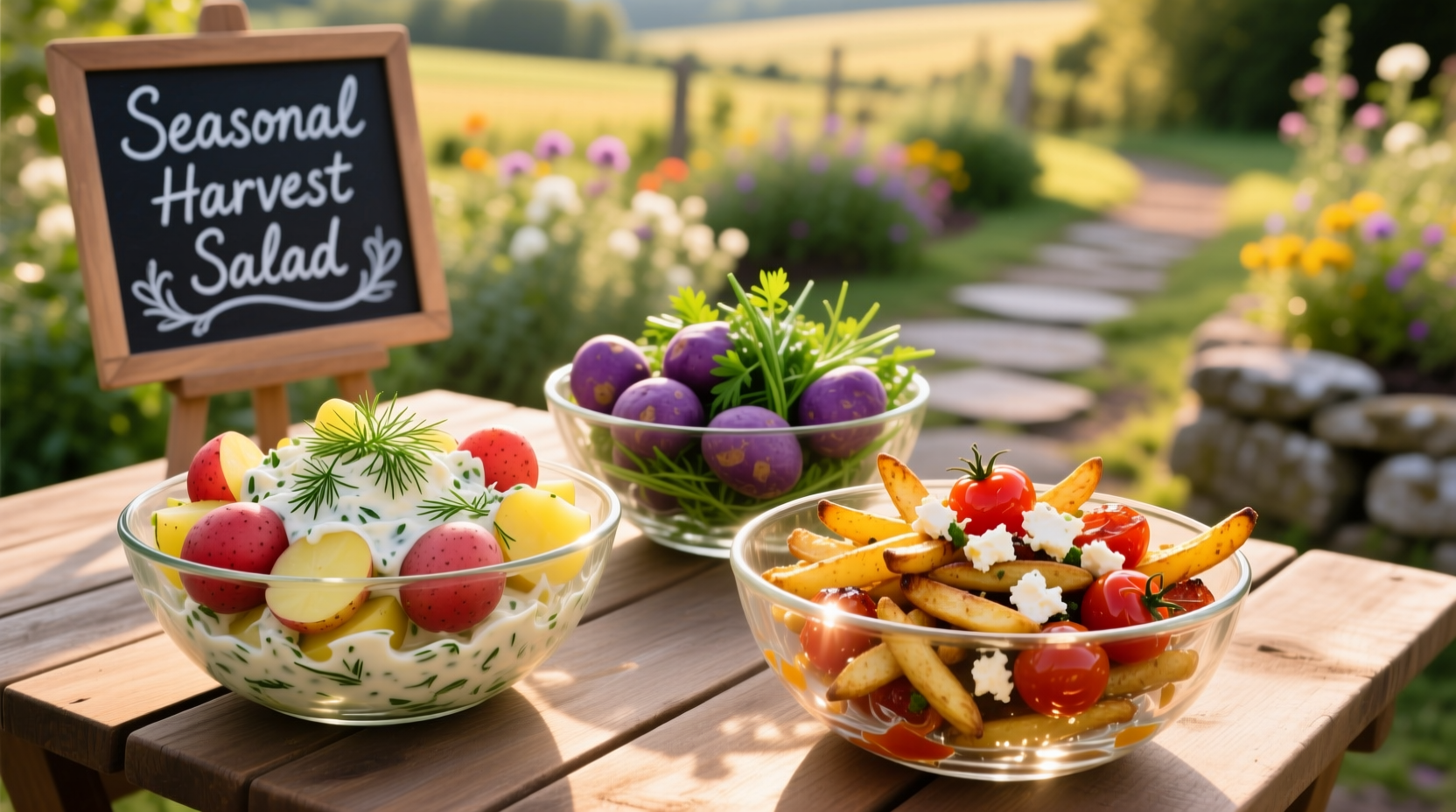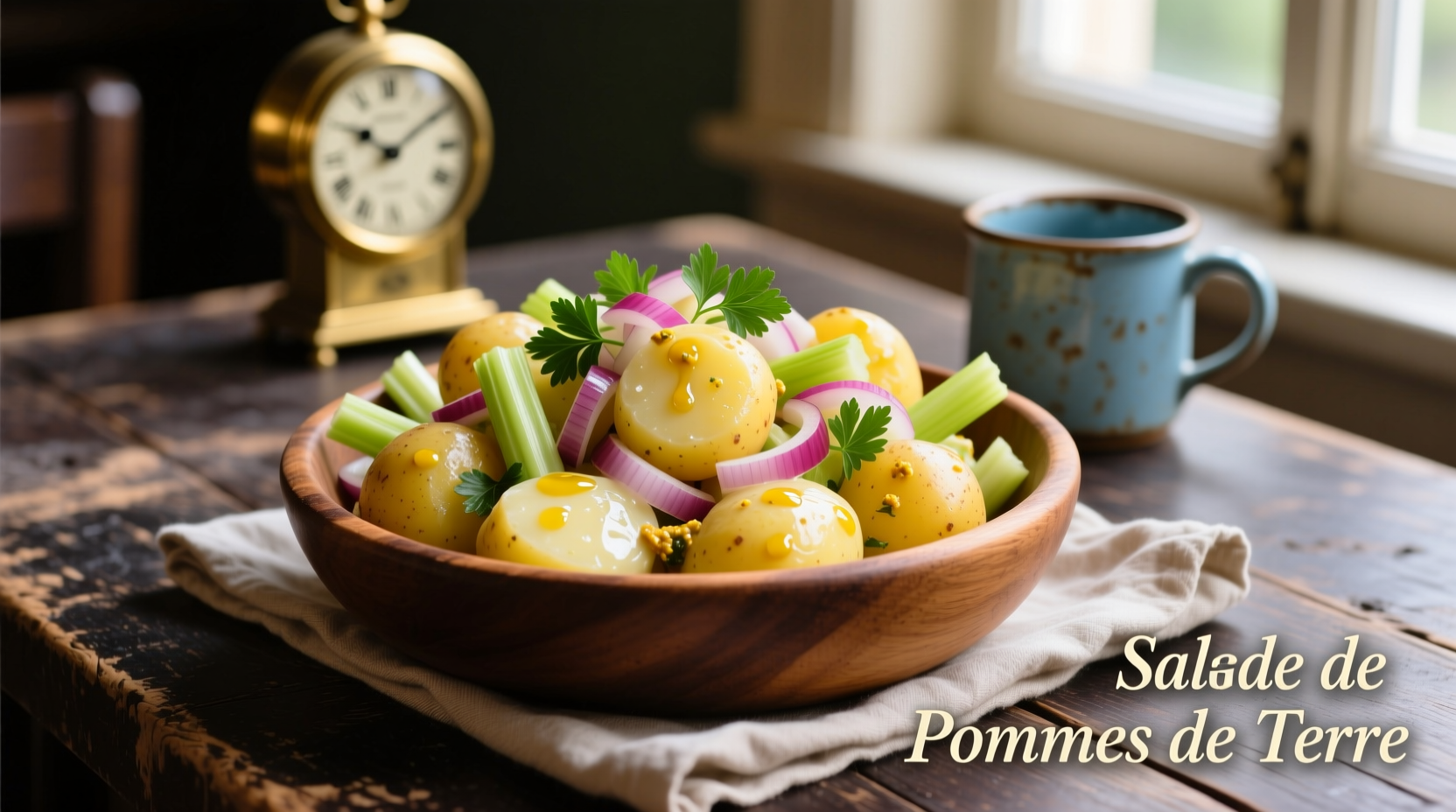Discover the essential techniques for creating perfect potato salads that stay creamy, flavorful, and structurally sound. This guide reveals the science behind ingredient selection, dressing absorption, and temperature control that transforms ordinary potato salads into standout dishes for any occasion.
When planning your potato salad, understanding the relationship between potato varieties and dressing absorption is crucial. Waxy potatoes like Yukon Gold or red potatoes maintain their shape better during cooking and dressing application compared to starchy varieties. According to USDA agricultural research, waxy potatoes contain 16-18% dry matter compared to Russets' 20-22%, making them ideal for salads where structural integrity matters.
Planning Your Perfect Potato Salad
Selecting the right potatoes forms the foundation of exceptional potato salad. Professional chefs recommend using a combination of waxy and all-purpose potatoes for optimal texture. Chef Antonio Rodriguez explains: "The key is cooking potatoes to just-fork-tender stage—overcooking leads to mushiness while undercooking creates unpleasant texture contrasts."
Consider these planning essentials:
- Cook potatoes in seasoned water with vinegar to preserve texture
- Cool potatoes completely before dressing application
- Use dressings at room temperature for better absorption
- Allow dressed salad to rest for 2-4 hours before serving
| Salad Style | Dressing Base | Key Ingredients | Best Potato Type |
|---|---|---|---|
| Classic American | Mayonnaise-based | Hard-boiled eggs, celery, mustard | Yukon Gold |
| German Warm | Vinegar-bacon dressing | Bacon, onions, parsley | Red potatoes |
| Russian Olivier | Mayonnaise | Beets, pickles, carrots | Waxy potatoes |
| Mediterranean | Olive oil-lemon | Capers, olives, herbs | Fingerling potatoes |
Mastering the Dressing Process
The dressing-to-potato ratio significantly impacts final texture. Food science research from the Culinary Institute of America indicates that potatoes absorb approximately 15-20% of dressing weight during the first hour after mixing. This explains why many home cooks experience watery potato salads—the excess dressing separates as potatoes reach absorption capacity.
For optimal results:
- Prepare dressing with slightly thickened consistency
- Toss potatoes gently while still slightly warm (not hot)
- Add dressing gradually, allowing absorption between additions
- Refrigerate dressed salad in airtight container
Professional kitchens often use a technique called "dressing staging"—applying 70% of dressing initially, then adding the remainder after the first resting period. This prevents the common issue of oversaturated potatoes with separated liquid.

Regional Variations Worth Trying
Understanding global potato salad traditions expands your culinary repertoire. The German version, traditionally served warm with vinegar-based dressing, represents one of the oldest preparations dating back to 18th century European cookbooks. According to food historian Dr. Sarah Johnson, "German potato salad emerged as a practical solution for using leftover boiled potatoes with readily available pantry ingredients like vinegar and bacon."
When adapting regional styles:
- For authentic German style, use apple cider vinegar and smoky bacon
- Russian Olivier benefits from precise vegetable ratios (1:1:1 potatoes, carrots, peas)
- Mediterranean versions shine with high-quality olive oil and fresh herbs
- American classics achieve best results with Duke's or Hellmann's mayonnaise
Serving and Storage Guidelines
Food safety considerations are essential for potato salads, especially when serving outdoors. The FDA recommends keeping potato salads at or below 40°F (4°C) and not leaving them at room temperature for more than two hours. For picnics and outdoor events, use insulated containers with ice packs to maintain safe temperatures.
Proper storage extends freshness:
- Store in airtight containers to prevent odor absorption
- Place plastic wrap directly on salad surface to minimize oxidation
- Consume within 3-5 days for best quality and safety
- Revive leftovers with a small amount of fresh dressing
Common Questions About Potato Salads
Many home cooks struggle with potato salad texture issues. The most frequent problem—watery salad—typically stems from dressing application timing or improper potato cooling. Always cool potatoes completely before adding dressing, as residual heat creates steam that separates the dressing.











 浙公网安备
33010002000092号
浙公网安备
33010002000092号 浙B2-20120091-4
浙B2-20120091-4